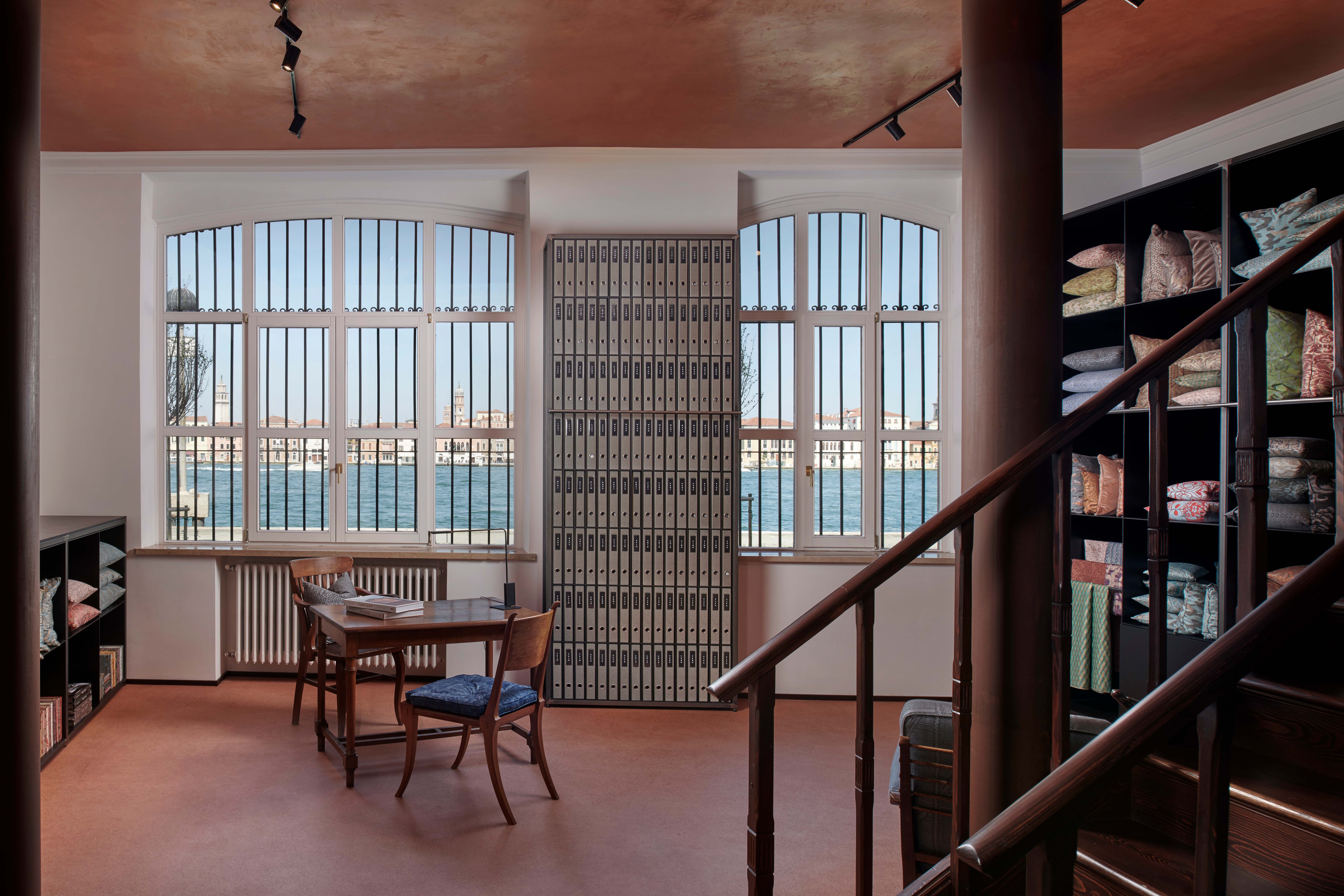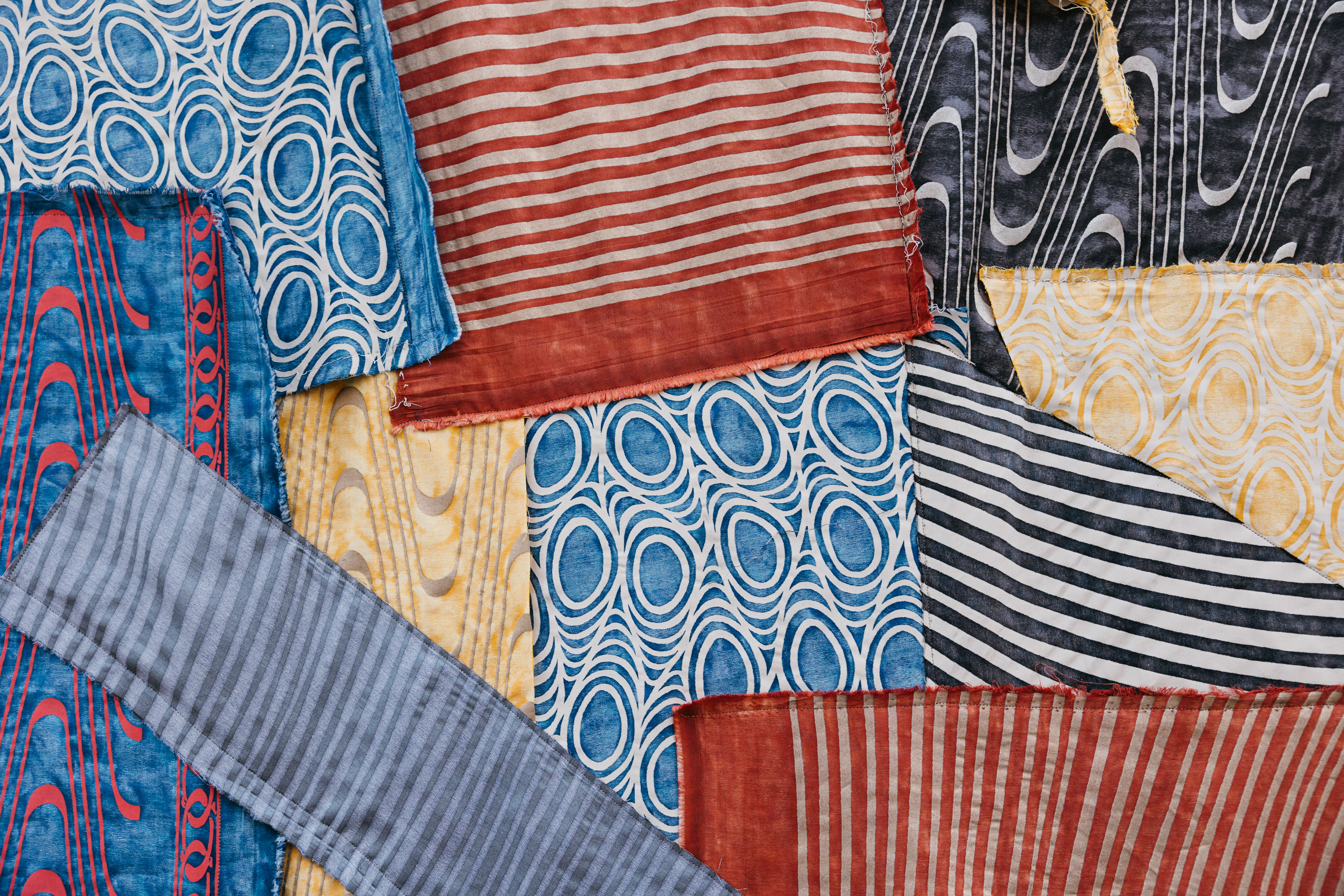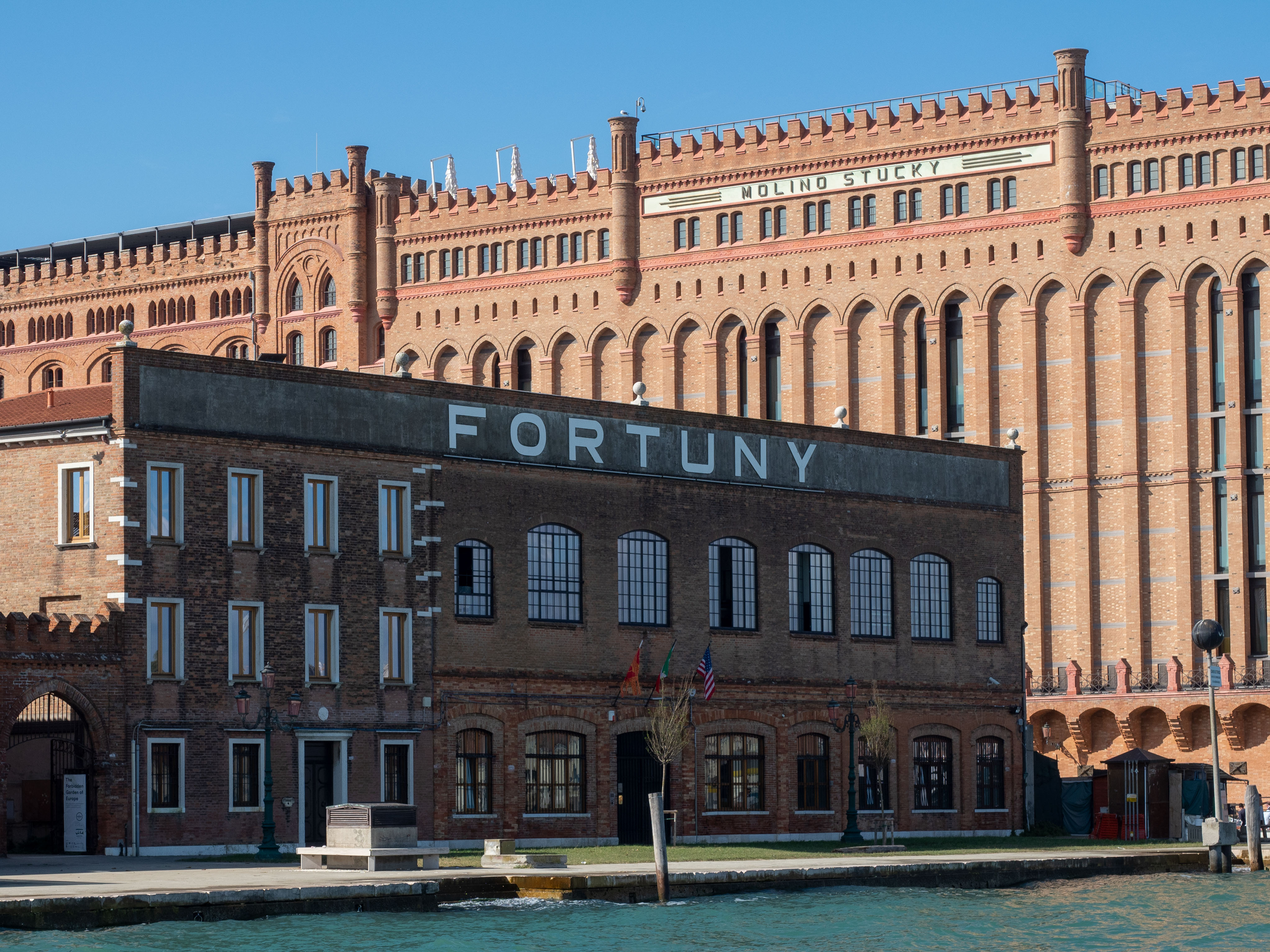
^ Ph. Guido Malara, courtesy Fortuny. Where not expressly indicated, photos are by VDB Team
Giudecca Island is mainly known for being one of the most important and prestigious places that made history in industrial production in the city of Venice. In the beginnings of XIX century, with its gardens, greenhouses, monasteries and its abandoned buildings, it became favorable for factories, stores and zones for the workers.
To characterize the productive and the architectural history, the island was home to Junghans factory, founded by the same German family, that had established the world’s biggest watch factory in the black forest and the construction of the Molin Stucky built in the XIX by the Swiss entrepreneur Giovanni Stucky that had decided to construct his venetian mill in the place that was originally dedicated to the church and the convent of S. Biagio and Cataldo, which was closed in 1809 by Napoleon.
Industrial Giudecca was completely modern, one of the significance of it is obviously the Fortuny factory founded on the San Biagio Fondamenta in 1921.
Thanks to the special opportunity provided by the factory it was possible for us to give them a visit. We were welcomed by Nicola Bortoluzzi, the sales responsible, Ecaterina who is amongst the artists that take care of design and decoration of the fabrics, and Vittoria Roggio, the commercial director.
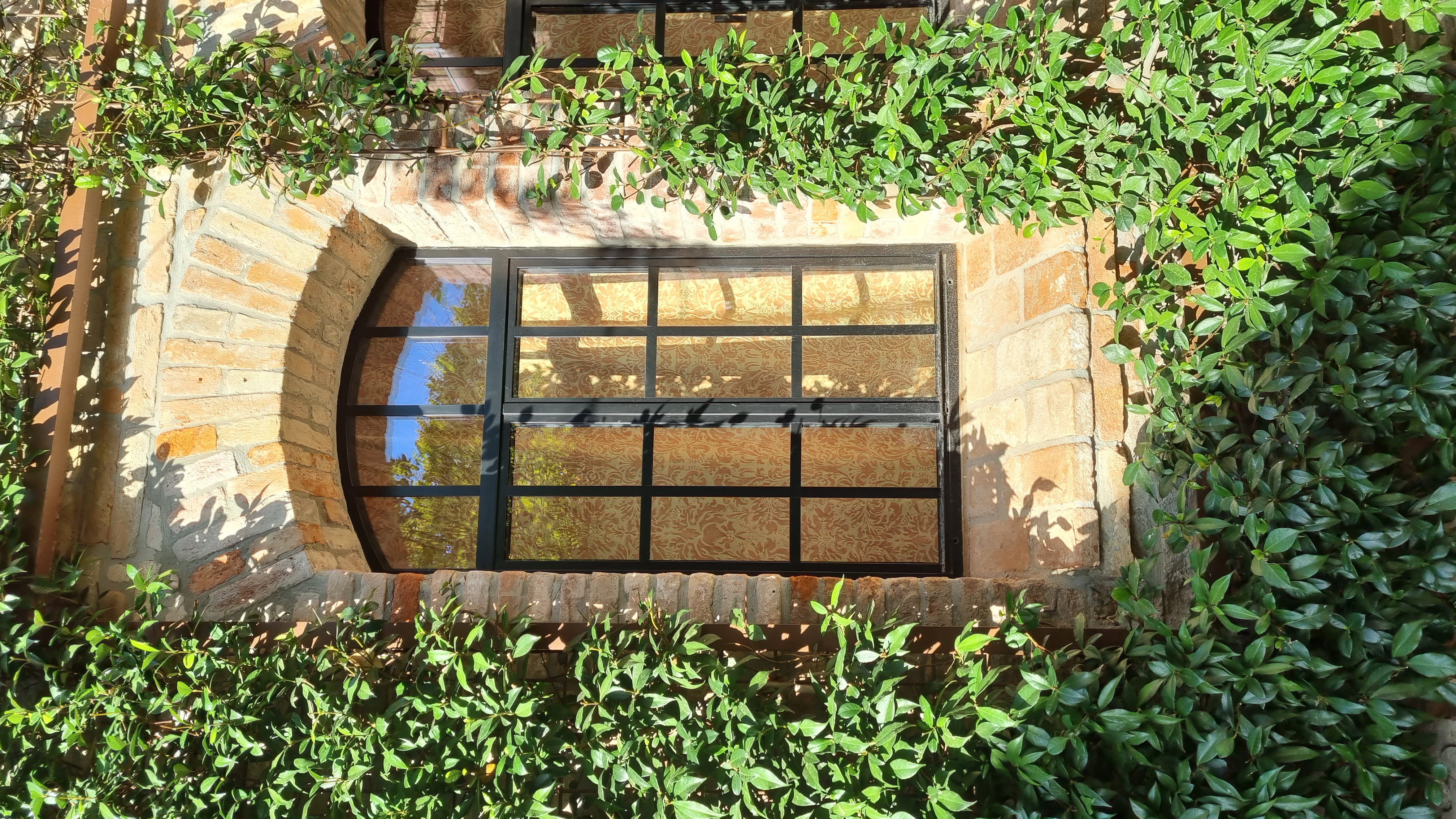

But a step back - who was Fortuny and how he became so important for the history of the floating city?

Mariano Fortuny y Madrazo was born in Spain in 1871. He was the son of the painter Mariano Fortuny y Marsal, and his mother Cecilia de Madrazo (daughter of Federico de Madrazo, the first director of Museo del Prado of Madrid, and the granddaughter of Jose de Madrazo) that both came from families with background in arts.
When Mariano’s father passed away (Mariano was only three years old), the family decided to move to Paris in the Belle Epoque atmosphere. This atmosphere also existed at their home, with the presence of the renowned artists, poets and philosophers of the time (Marcel Proust, for example, was among those who enjoyed having conversations with Lady Fortuny).
< A portrait of Mariano Fortuny y Mandrazo, via fortuny.visitmuve.it.
Below: Palazzo Pesaro degli Orfei, interiors and exterior. Ph. Massimo Listri - courtesy MUVE Palazzo Fortuny
The perfect combination of East and West makes Venice the ideal setting for a nomadic soul like Fortuny, who is used to travelling the world. In 1889, when he was barely eighteen years old, he decided to leave France, fascinated by the colours of the lagoon, and together with the mother and the sister, he firstly lived in Palazzo Martinengo, and only later Mariano settled permanently in the Palazzo Pesaro degli Orfei, the current home of the Fortuny museum.


The eclectic variety of interests that moved the young man's spirit led him to deal with various interconnected sectors: known today in particular for the fabrics that cover the rooms of the most exclusive international venues, he also managed to find his niche as a painter, engraver, photographer, set designer and theatre lighting technician. It was his love for the theatre that led him to one of the most famous and refined fabric productions on the market.
Below: historical pictures from the archive, courtesy Fortuny
Built on the foundations of an old monastery, the factory as we know it today belongs to a 19th-century restoration of a portion of the Molino Stucky given in hand to the Fortuny family, who decided to create the showroom and production rooms, carefully screened by heavy curtains that help to keep inviolate a secret guarded for more than a hundred years.
Through the seventeenth-century cloister, an original component of the location's history, one enters what was once the art deco residence of Countess McNeill Lee (the American interior designer who will take over the Fortuny's company), who settled next to the factory to ensure direct and widespread control.
The lush garden of the property, which once boasted a splendid orangery, now used to accommodate the most exclusive clientele, was also home to a vegetable garden personally maintained by the owner, who wanted to ensure a healthy diet for the workers who devoted their time, effort and skills to the production of the finest fabrics.

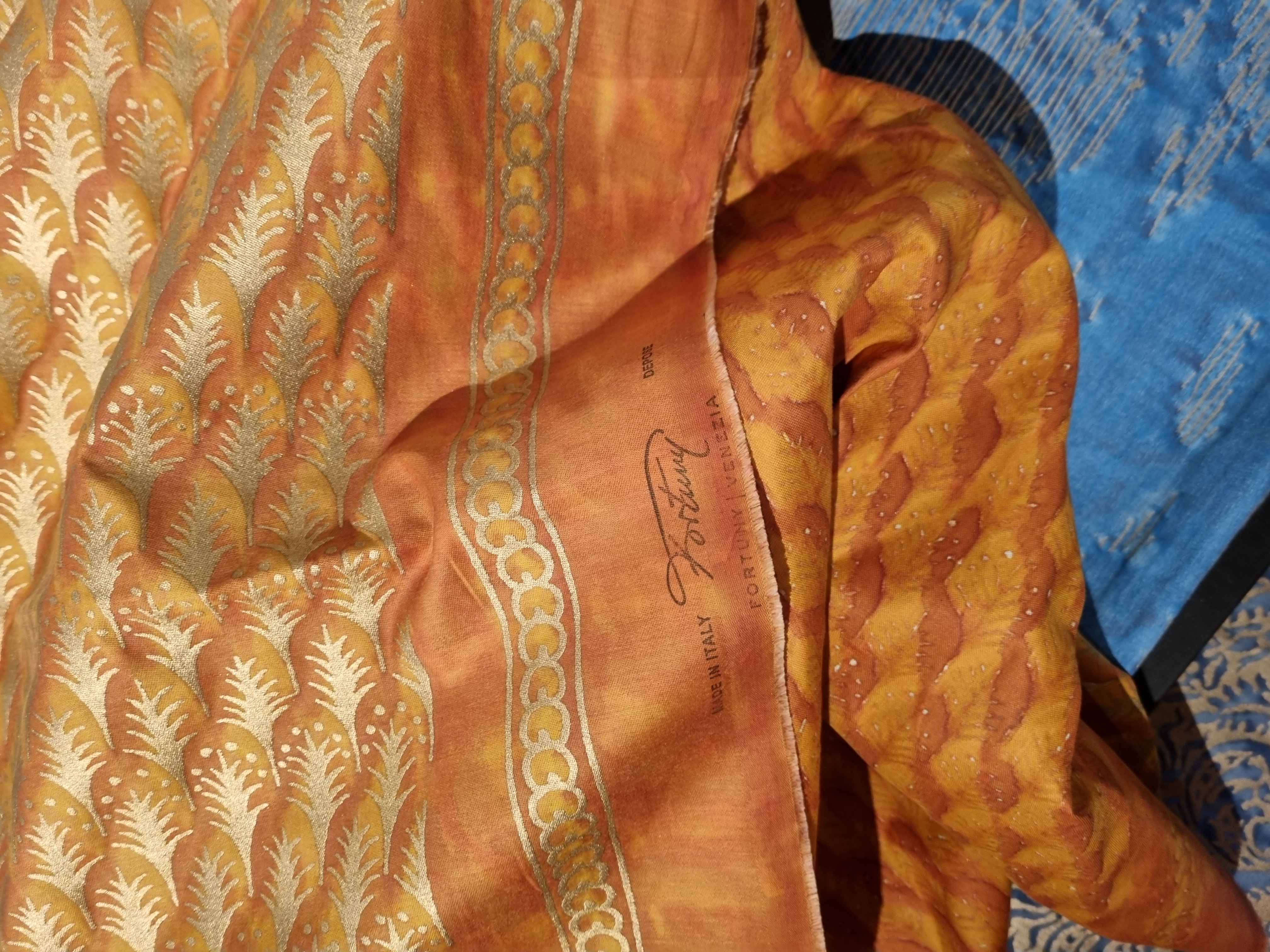
The centenary of the first fabric made by the Fortuny factory was recently celebrated. What has remained unchanged since then and what has evolved, adapting to the times, especially in terms of textile design and technology?
The techniques that we use are the same that were introduced by Mariano Fortuny and we follow his tradition, we are constantly in search of new materials and updated technologies, all of this is to preserve the essence and follow the mission of the founder. In addition to the quality and passion with which we nurture this story, we are particularly keen to preserve the allure of the 1920s that emerges from the heart of the production department: the central part of the brick structure houses the warehouse and part of the production on the ground floor, with the original machinery of the time.
On the first floor, instead, we have the colour laboratory and production, which extend to where the back garden opens up, next to which is a space occupied by the cutting and packing area.
For prints, do you still use the original carved wooden moulds?
We currently use around 90 original moulds that are part of the current collection, but we have many dozens archived, all designed by Mariano Fortuny, taken from time to time for research or specific collections. When we think of a printed pattern, we use a combination of different techniques, from printing to hand retouching, depending on the product and the desired result.
What can you tell us about your processing techniques?
Dealing only with semi-finished cotton products, inside the factory the production stages only concern the colouring and printing phase and are carried out with the help of the original machinery designed by Mariano Fortuny in the 1920s. The fabric production areas are off-limits to anyone who is not part of the 25-employee team working inside, as explicitly requested by the founder: no one is allowed to witness the "magic" that takes place inside, and this contributes to veiling the great red-brick building, the beating heart of our production, with mystery (we admit that we too, from our offices, try to peek through the curtains that veil the factory windows, driven by curiosity to know what goes on inside those four walls, but no way, they are all very good at keeping secrets!)

From your story, we learn of colours obtained with dyes and pigments that contributed to enveloping the figure of Mariano Fortuny with an aura of mysticism, which also earned him the title of ‘magician of Venice’. Today, how much of these ancient recipes is preserved and maintained and how much has evolved, responding to today's needs for sustainability?
As we know, Fortuny was born as a painter in one of Spain's most famous families in the art world; having been inspired by Renaissance influences and Oriental art, which made colour their stylistic signature, he took many details from the natural world, trying to capture its essence and bring it back to the palette. We have managed to keep the original recipes unchanged, still using the same formulas developed by Henrietta Negrin, Mariano Fortuny's wife, which are also carefully preserved. We can say that the dyeing techniques have also remained faithful to their origins.
For Fortuny's centenary, you launched a beautiful collaboration with the creative Adriano Cisani. Do you intend to continue this fruitful link with the art world? Are there any other ongoing collaborations you can tell us about?
The installation that Adriano Cisani created for us was a significant expression of how art and textiles can travel on the same binary; the interpenetration of two worlds, sometimes wrongly considered separate, has produced a piece of art that for us represents the epitome of our brand. We are fascinated by art and beauty, which is why we continue to build fruitful relationships with many artists and designers, local and otherwise.
On the right, site specific installation by Adriano Cisani. Ph. Nicolò Miana, courtesy Fortuny

We have new projects in the pipeline, first and foremost the current collaboration with the designer Chahan Minassian. On the occasion of the Biennale Arte 2024, the former residence of Countess McNeil is open to the public for the first time hosting FORTUNY + CHAHAN, a special collaboration with the aim of transforming Fortuny's historic headquarters into a showcase for contemporary design in Venice.


Ph. Sebastiene Veronese, courtesy Fortuny
Fortuny's two showrooms are located in Venice and New York: how do customers in Italy differ from those overseas?
Our artistic direction is quite homogeneous, there is not one collection designed for Italy and one for the United States, as some brands choose to opt for; when we launch a collection it is designed to be recognised internationally uniformly, always based on the archive designs created by Mariano Fortuny. As rightly mentioned, we have two showrooms, one in Venice and one in New York, both designed by architect Alberto Torsello, who also serves as artistic director. The concept, for both, is the typical industrial style of the Fortuny factory, rich in wood and iron, with rolls of fabric suspended from the ceiling, a functional but also very scenic choice.

Via Vogue México Latinoamérica - www.vogue.mx
What about the fashion world?
We have had the privilege of working with real masters of haute couture, both Italian and international: Maria Grazia Chiuri loves our fabrics so much that she has used them for both Valentino and Dior. Even Rick Owens (who lives in Venice ed.) wanted to incorporate Fortuny fabrics in one of his recent collections. However, these are small capsule collections presented during fashion shows and, with the exception of these sporadic collaborations made possible mainly thanks to our creative director, Mikey Riad, we would like to emphasise that fashion is not our main sector.

One last question before we say goodbye: Have you ever thought, as historical textile companies often do, of opening your own Academy of Traditional Crafts, through which you could pass on such ancient and precious know-how to new generations? What training have the craftsmen working in the Fortuny company received?
The question is an excellent one: one of the projects that is closest to the heart of the owners is that of starting an academy within the company; to be able to preserve the history of Fortuny and at the same time share it with those who will be the future holders of our tradition, would allow us not to disperse the true wealth that we hold and preserve it from the passing of time.
We are working on it, and we do not exclude that we may be able to inaugurate an Academy of our own soon. The keepers of this ancient knowledge come from different backgrounds, although most of them have academic studies behind them that have enabled them to move nimbly between fabrics and colours. The mastery then refined with dedication to a craft that requires patience and meticulousness, but which gives great satisfaction.
_
Interested in finding out more about Fortuny fabrics?
We invite you to visit their showroom and shop by appointment (the only and official one in Venice is in Giudecca, Fondamenta S. Biagio, 805) and to read our article on the reopening of Palazzo Foruny. We wrote about it here.
_
FORTNUNY+CHAHAN awaits you by appointment, from Mondays to Saturdays, from 10:00 to 18:00. More details at the official website.








